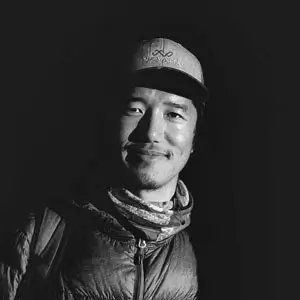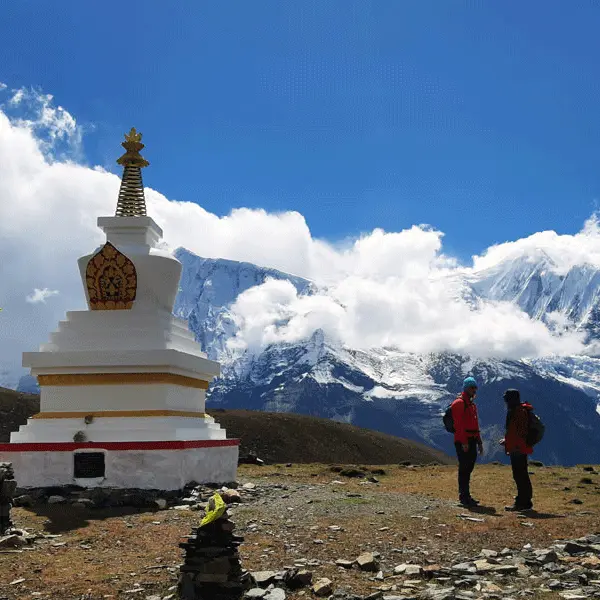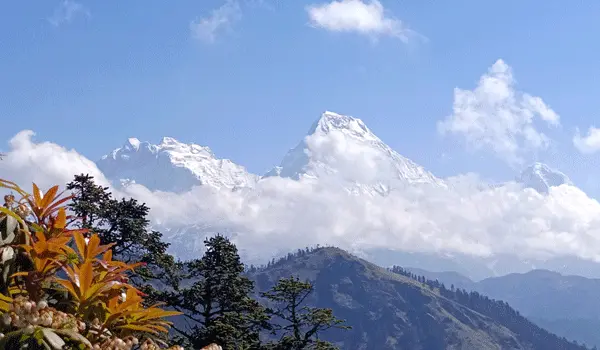Nar Phu Tilicho Lake Trek Itinerary
Day 01: Arrive in Kathmandu (1350 M) and transfer to the Hotel
Day 02: Kathmandu Valley sightseeing with a tour guide and trek preparation
Day 03: Drive to Jagat (1300 M) via Besishahar (760 M)
Day 04: Trek to Dharapani (1860 M)
Day 05: Trek to Koto (2600 M)
Day 06: Trek to Meta (3560 M)
Day 07: Trek to Phu (4080 M)
Day 08: Acclimatization day and explore
Day 09: Trek to Nar (4200 M)
Day 10: Trek to Ngawal (3660 M) via Kang La pass (5320 M)
Day 11: Trek to Manang (3540 M)
Day 12: Rest day and explore Manang Valley
Day 13: Trek to Tilicho Base Camp (4150 M)
Day 14: Trek to Tilicho High Camp (5020 M)
Day 15: Trek to Yak Kharka (4200 M) via Mesokanto La Pass (5121 M)
Day 16: Trek to Jomsom (2720 M)
Day 17: Fly to Pokhara (825 M)
Day 18: Drive to Kathmandu (1350 M)
Day 19: Final departure
Transportation for the Nar Phu Tilicho Lake Trek
The trek starts from Jagat. 7-8 hours of Jeep drive from Kathmandu via Besisahar will take you to Jagat.
The trek ends at Jomsom. You will fly to Pokhara the next morning and then drive to Kathmandu.
Flight and Transportation Costs
Kathmandu to Beshisahar private Jeep cost- 150 USD
Kathmandu to Beshisahar local bus cost per person -8-10 USD per person
Beshisahar to Jagat local Jeep cost- 100 USD
Jomsom to Pokhara flight cost per person: 125 USD
Pokhara to Kathmandu private Jeep cost- 160USD
Nar Phu Tilicho Lake Trek Guide and Porter Cost
French Guide cost per day- 35 to 55USD
English Guide cost per day- 25 to 35USD
Porter cost per day- 20 USD
Permits and paperwork for the Nar Phu Tilicho Lake Trek
The Nar Phu Valley region is restricted, so you must get a restricted area permit from the Department of Immigration. To get a permit, there must be at least two people and a government-certified trekking agency. You will need a 1-week restricted area permit. You will need the ACAP (Annapurna Conservation Area Project) permit as well. For Tilicho Lake, just the ACAP permit will do all the work. The trekking agency that is providing the service to you will do all the permits and paperwork.
Permit cost
The restricted area permit for Nar Phu Valley costs vary according to the seasons. From September to November-100USD per person for 1 week. Then 15 USD fee for each additional day per person.
From December to August-75USD per person for 1 week. Then, 15 USD for each additional day. Annapurna Conservation Area Project (ACAP) permit costs NPR 2000 per person.
Food and Accommodation on the Nar Phu Tilicho Lake Trek
The Nar Phu Tilicho Lake Trek has become a full-on teahouse trek recently. Teahouses and lodges are available in limited numbers along the route, providing all the food and accommodation services. The services are mostly basic. Construction of new lodges and teahouses is going on. Still, we recommend a group size maximum of 12 people and two nights camping in Tilicho High Camp and Yak Kharka for a better experience.
On the day of the crossing of the Kang La Pass and Mesokanto La Pass, a packed lunch should be taken as there are no teahouses on the way. The places that are also parts of the Annapurna Circuit, as well as Jomsom, have plenty of food and accommodation services.
Toilets are mostly squat-down types located indoors and shared, but are also located outside in many places. Few places have a Western-style toilet or a sitting toilet as well.
Hot showers are easily available and cost around 2-4USD per person. Except in the Nar Phu Valley and Tilicho region, most of the hotels have attached rooms with free hot showers.
Drinking-Water on the Nar Phu Tilicho Lake Trek
Tap water and other natural sources are available along the routes, which you can drink by using a water purifier, filter, or pills. Mineral water is available in plastic bottles and can be bought in hotels, teahouses, and lodges. However, we encourage you to buy less plastic bottled mineral water and use more natural and tap-sourced water for environmental concerns.
Electricity, Telephone, and Internet on the Nar Phu Tilicho Lake Trek
Electricity is available throughout the whole region except Tilicho Base Camp, High Camp, Yak Kharka, and Phu village. So, we recommend you bring solar chargers with you.
The phone network works in most places except in Phu Village and Tilicho High Camp. We recommend you buy an NTC SIM card as it has better coverage in higher areas.
Wi-Fi service is available in the entire region except for Phu village, Tilicho High Camp, and Yak Kharka. Wi-Fi in the higher regions is expected to break down often during harsh weather.
Nar Phu Tilicho Lake Trek Difficulty
The Nar Phu Tilicho Lake Trek is a physically demanding trek that consists of tough and challenging passes like Kang La and Mesokanto La. After crossing Mesokanto La Pass, if there is a lot of snow, a fixed rope will be needed while going down. There is a possibility of getting high altitude sickness at altitudes like this. If you have already done treks like Everest Base Camp, Manaslu Circuit, or any other high-altitude treks, then it will not be a problem.
For people with no previous experience of trekking, taking cardio exercises like cycling, running, swimming, hiking, etc., for at least a month before trekking in Nepal is highly recommended.
While on the trek, you will do the acclimatization process, where you will learn to acclimatize to the increasing altitudes day by day.
Know more about altitude sickness
The best time to do the Nar Phu Tilicho Lake Trek
The ideal time to do the trek in this region is in the Autumn (September-November) and Spring (March-May) seasons. The weather is moderate during these times. The number of trekkers is also high in this period.
During the autumn, the skies are clear, providing crystal clear mountain scenery. Festivals like Dashain and Tihar are celebrated in these periods, adding extra uniqueness to the trek.
In the springtime, trails are decorated with colorful Rhododendron forests. The number of trekkers is a little less compared to the Autumn season. The Nepalese New Year falls at this time. The skies are not as clear as during Autumn, and rainfall can be expected sometimes.
If you would like to avoid the crowd, you can trek in the monsoon and winter seasons.
During the monsoon, trails look beautiful with lush green forests. But the roads and trails are slippery with leeches. Mountain scenery will be difficult to see as the skies are covered with clouds most of the time.
Trekking in the winter provides beautiful mountain scenery. However, the heavy amount of snowfall can make it impossible to trek in higher places and passes. You may need to return halfway or cancel the trek for safety concerns. And lodges and teahouses are closed down due to extreme cold.
Have any more questions about the Nar Phu Tilicho Trek? Please let us know. We will be very happy to answer all of your questions.





